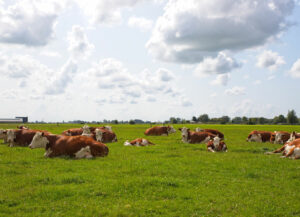Andrés Haro & Fernando Diaz
Farmers understand dairy cow well-being is critical to optimize their performance. When cows’ health is compromised by disease or trauma that deteriorates their well-being, and causes pain and suffering that cannot be alleviated by treatment, culling through timely euthanasia should be recommended.
Deciding on the early, untimely death of a cow that in spite of all efforts cannot regain its health is a frequent practice. However, the euthanasia of cow is a risk the farmer takes to ultimate end the unnecessary suffering of an animal. Identifying the timeliness of discarding a dairy cow can be challenging for dairy farmers, since an untimely decision may affect the profitability of the farm.
A recent study evaluated (Walker et al., 2019) the importance of timely euthanasia in dairy farms. The definition is the early, prompt and appropriate slaughter of an animal, when health, production, and quality of life are compromised, and always taking into consideration the well-being of the cow. Deciding when to euthanize based on animal welfare is confusing and affected by many factors:
- Extent of knowledge in animal behavior and cows’ physiological processes by those in charge of farm management and the economic impact represented by the decision.
- A lack of standard operative procedures in dairies, in the decision-making process of when to treat a cow or not, and the bond established between the animals and their keepers to decide a timely euthanasia.
Researchers estimate that 33% of dairy farm management and care personnel are trained to effectively address the tough decision-making process on timely euthanasia procedures. Although the decision not to slaughter or send the cow to a slaughterhouse begins on the farm, it is largely a shared burden between the loss of the animal and the economic impact on the farm.
Dairy farms often lack specific standard procedures for the management of euthanasia in cows with sustained sickness. The lack of strict protocols with time limits to make the decision to slaughter a compromised cow or attempt its recovery, make managers take the decision without specific criteria and ignorance of potential treatments, leading to bad decisions.
The interactions between farm managers and their animals can positively and negatively impact the well-being of dairy cows and that of their managers. However, the link is not always clear, since manager’s attitudes and personality traits can affect this decision. This factor is oftentimes controversial since it could affect the ability to make unbiased decisions, such as the appropriate moment when euthanasia is clearly necessary.
Timely euthanasia is the correct decision to discard a compromised animal both from an ethical and economic perspective. In addition, it is necessary for farms to implement appropriate and strict procedures to guide the animal caretaker to consider the well-being and health of the cow.
Reference
Walker, J. B., Roman-Muniz, I. N., Edwards-Callaway, L. N. 2020. Timely Euthanasia in the United States Dairy Industry–Challenges and a Path Forward. Anim. 10: 71.
© 2020 Dairy Knowledge Center. All Rights Reserved.









